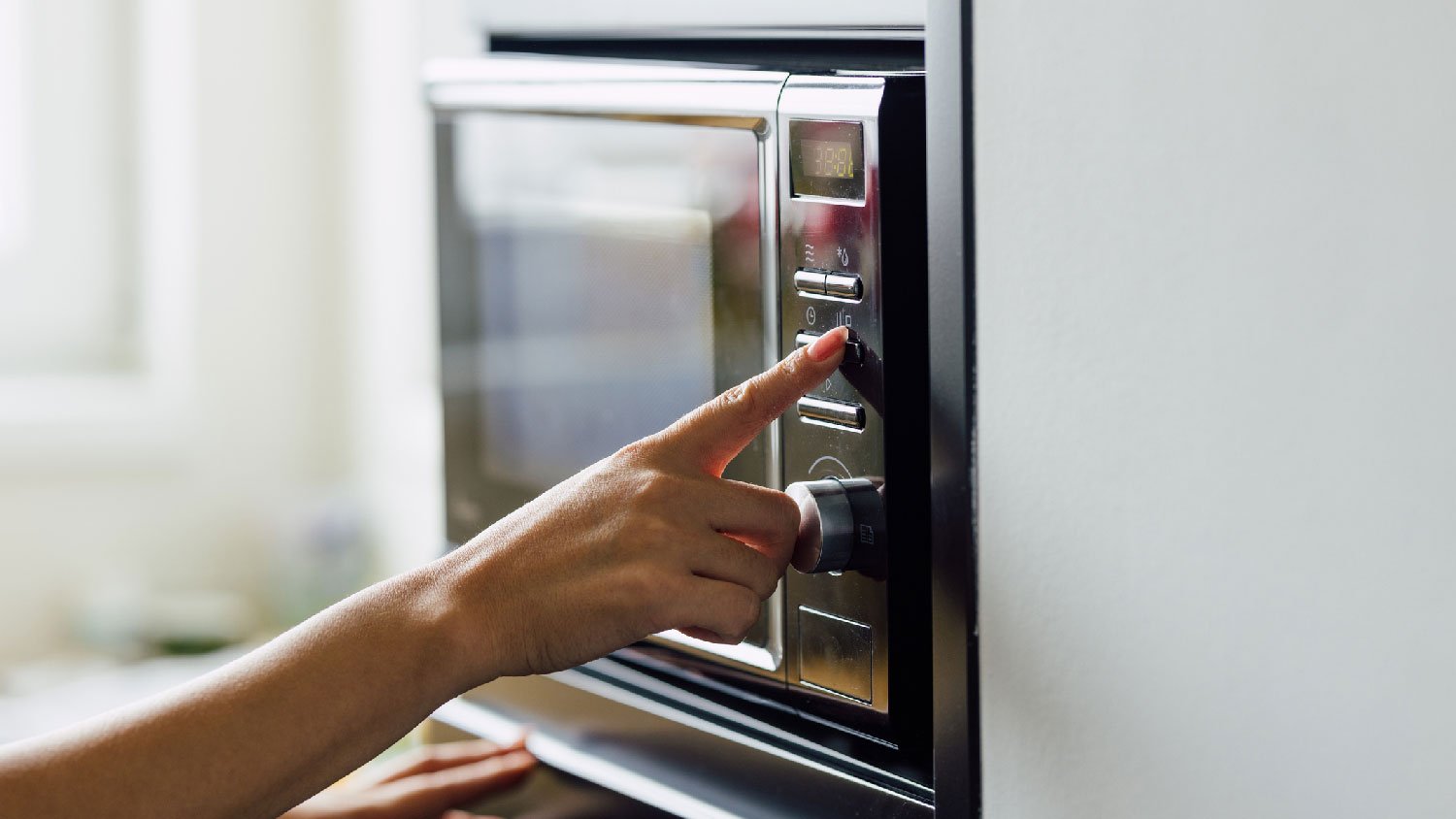How to Clean a Washing Machine Filter in 5 Fast Steps
The often-overlooked filter is the key to clean


- Tub
- Towel
- Toothbrush
- Liquid laundry detergent
Often hidden out of sight, your washer has a filter that, just like the one in your dryer, collects lint and other debris. But knowing how to clean a washing machine filter isn’t as straightforward as a dryer’s lint trap.
Luckily, this task is much easier than it might sound. The simple maintenance task of cleaning your filter every four months will prolong the life of your appliance and increase your machine’s efficiency—a win-win.
Prepping to Clean a Washing Machine Filter

Before you can learn how to clean a washing machine filter, you have to find it—and it’s not as prominently placed as a dryer’s lint filter. Hopefully, you still have your washer’s user manual, as that can point you in the right direction.
If not, here are some tips to locate it, depending on the type of machine you have. Prior to removing the filter, turn all the knobs to “off” and unplug the appliance.
Top-Loader Washing Machines
Start by looking on the top rim of the washer tub—there might be a removable screen for lint. Sometimes, the filter is inside the center agitator. To access it, you should be able to unscrew the top of the agitator.
The last place to check is near the water pump or at the end of the drainage hole.
Front-Loader Washing Machines
The filter is usually located on the bottom right side of front-loading washing machines via a trap door. Behind the door, you should find a lint filter as well as a water pump filter.
Some newer models of washing machines don’t have removable filters. Instead, they have self-cleaning filters that are located in the pump mechanism. These machines don’t require manual filter cleaning, but do have a cleaning cycle you should run once per month.
While you’re already working to clean your washing machine’s filter, you might as well do a deep clean of your washer to remove mildew and other funky stuff from growing in there. It’s another step toward extending your washing machine’s lifespan and increasing its performance.
If you want to clean the washing machine as a whole, you’ll need a few more products, including vinegar and baking soda.
Wipe the Washing Machine Filter
Now that you’ve completed the prepping step, you’re ready to learn how to clean a washing machine filter.
Place a towel below the filter’s housing (if it’s outside of the machine) to catch any water that may fall out. Next, wipe away lint and debris from the filter using a damp cleaning cloth. You should also wipe down the filter’s housing, and do a thorough inspection to be sure to clean the area well.
Soak the Filter
Fill a basin with hot, soapy water (1 teaspoon of dishwashing liquid or detergent is fine for this). Place the filter in the basin and let it soak for at least 10 minutes.
Scrub the Filter
You’re already almost done—we told you learning how to clean a washing machine filter was easy! Now, all you need to do is gently scrub away any dirt with a toothbrush or other soft bristle brush.
Return the Washing Machine Filter to Its Housing
Now that the filter is clean, you can return it to its home. The washing machine filter does not need to be fully dry before being placed back in the washer; they’re made to withstand moisture and water.
Run the Machine
Run a short cycle on the machine to confirm the filter is securely in place. If everything seems to be working, you’re good to go. If something seems off—for instance, if you notice a water leak—take the filter out again and place it back into its housing properly.
DIY Cleaning Your Washing Machine Filter vs. Hiring a Pro
If you have an annual maintenance package for your washing machine, cleaning the filter should be one of the included tasks. If not, consider hiring a local washing machine repair service.
You’ll pay anywhere from $50 to $150 per hour for washing machine repair costs, so weigh the pros and cons to decide if having a pro clean your washer for you is worth it. But if you are motivated, learning how to clean a washing machine filter is pretty simple and can be done on a leisurely weekend afternoon.
Frequently Asked Questions
Your clothes—and your washing machine—will send you a few signals if you’re overdue for cleaning your washing machine filter. If you notice a buildup of detergent residue on your clothes, your clothes don’t dry quickly or at all, or you’re noticing lint in the machine, it’s time to clean the filter.
A dirty or clogged washing machine filter will prevent your appliance from running as well as intended, meaning your clothes won’t get as clean as they should. They also might smell badly and have residue on them. Inefficient machines also use more energy, which can drive up your electricity bill. In addition, a clogged washing machine filter can lead to mold and mildew buildup, the spores of which can stick to your clothes, causing an allergic reaction. Finally, your machine, without getting proper maintenance and care, may not last as long.
Your washing machine’s filter is usually located in one of these four places: in the center agitator, in the drum’s top lip, behind a door on the front of the machine, or near the water pump. If you still have your owner’s manual, check that first, as it should tell you where the filter is located. In addition, some newer machines don’t have a manual filter, and rather have a self-cleaning function.
You should clean your washing machine filter at least four times per year. Completing this task at the start of a new season is a good idea. Cleaning your filter will prolong the life of your appliance, and help your clothes get properly cleaned. It will also prevent your washing from developing any funky smells from lint buildup.
If you have a self-cleaning washing machine but you’re still seeing lint, your water pump filter might be clogged. To clean it, you should unscrew the drain hose, then remove the water pump filter. From there, you can inspect it and clean it with warm water before replacing it. Check to be sure your washing machine is functioning by running a short cycle.
Deciding whether or not you should buy a new washing machine should be determined by the age of your appliance, if the cost of any repairs will exceed the cost of a new machine, and whether or not it is working properly. Newer models last about five years on average, while older models can last anywhere from eight to 10 years.




- Window A/C Repair
- Microwave Repair
- Small Appliance Repair Services
- Garbage Disposal Repair
- Emergency Appliance Repair Companies
- GE Appliance Repair
- Samsung Appliance Repair
- Samsung Microwave Repair
- Whirlpool Repair
- Maytag Appliance Repair
- Kitchenaid Mixer Repair
- Kenmore Appliance Repair
- Kenmore Vacuum Repair
- Bosch Appliance Repair
- Kenmore Refrigerator Repair
- LG Appliance Repair Services
- GE Microwave Repair
- Electrolux Appliance Repair
- Electrolux Vacuum Repair















